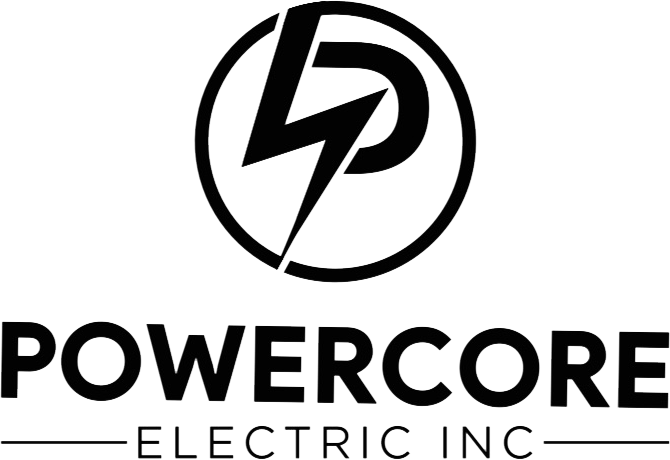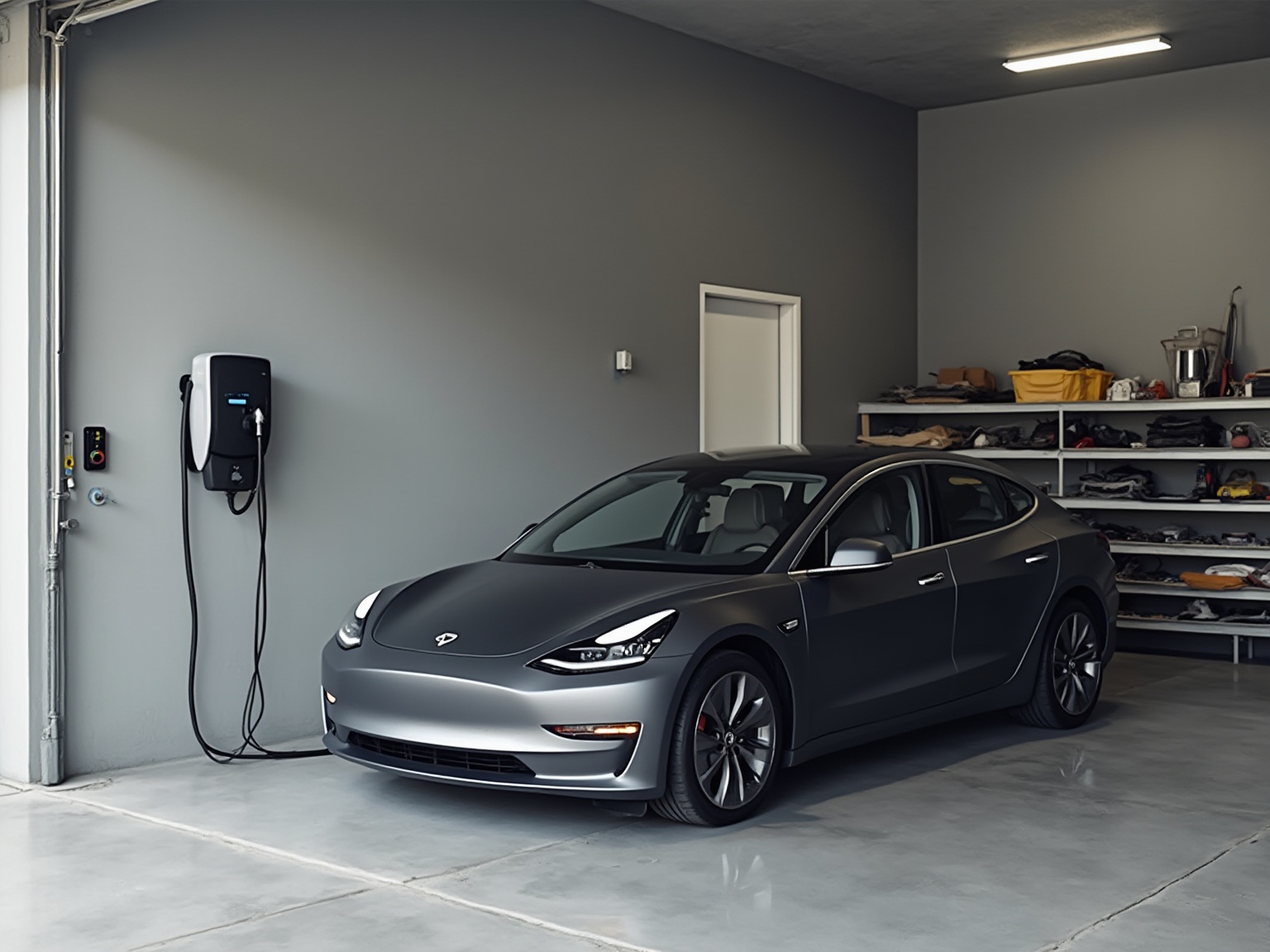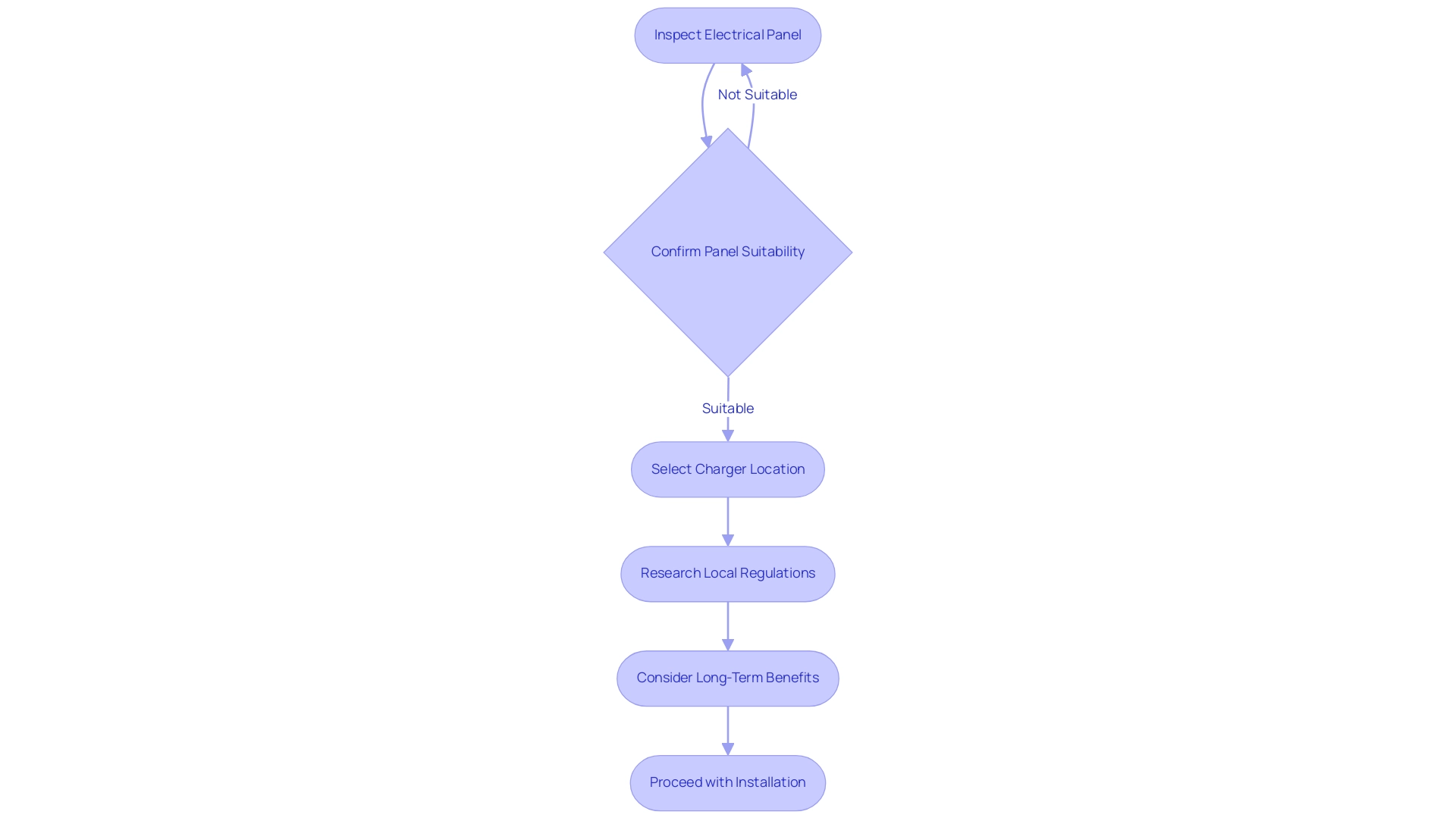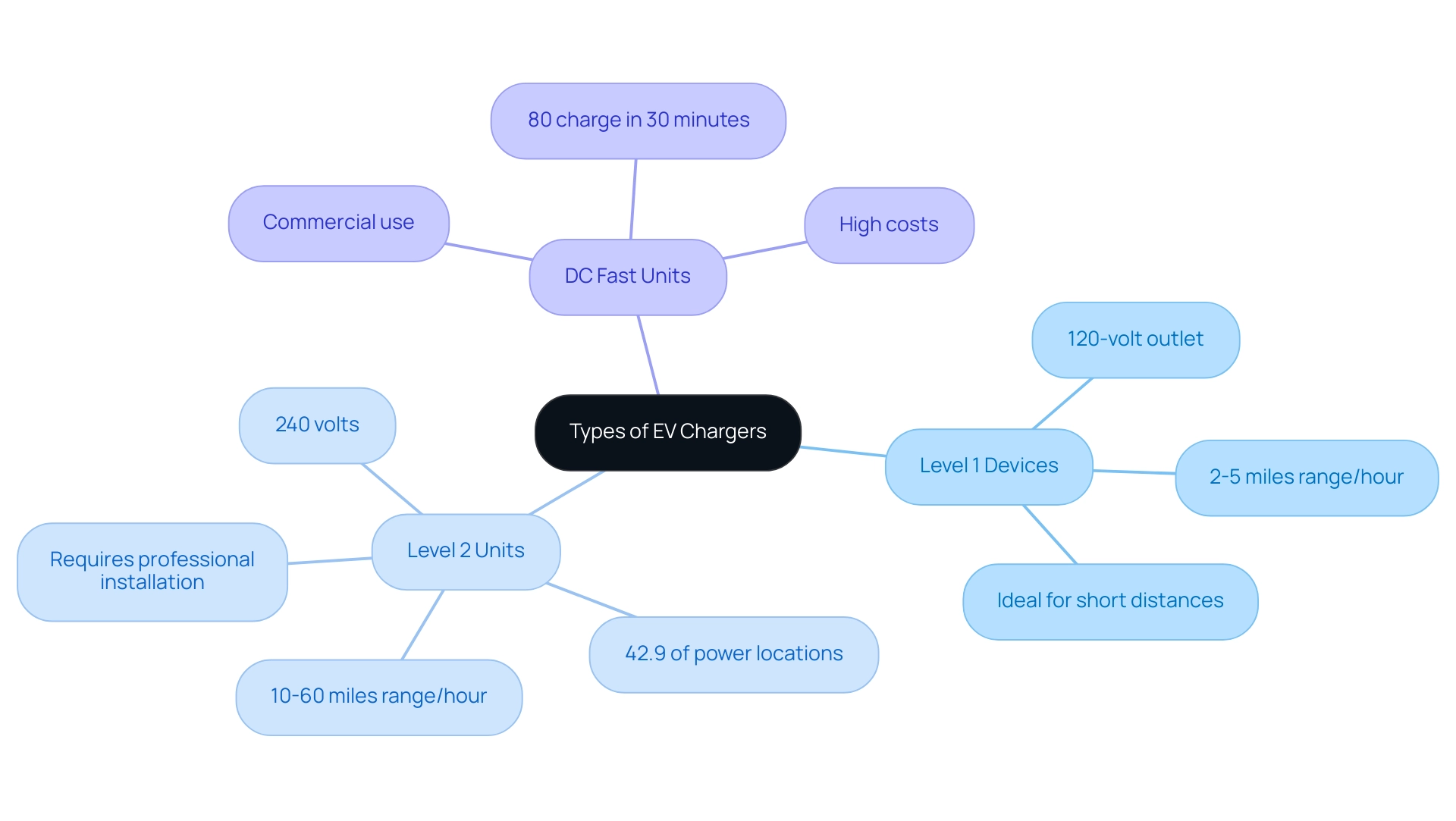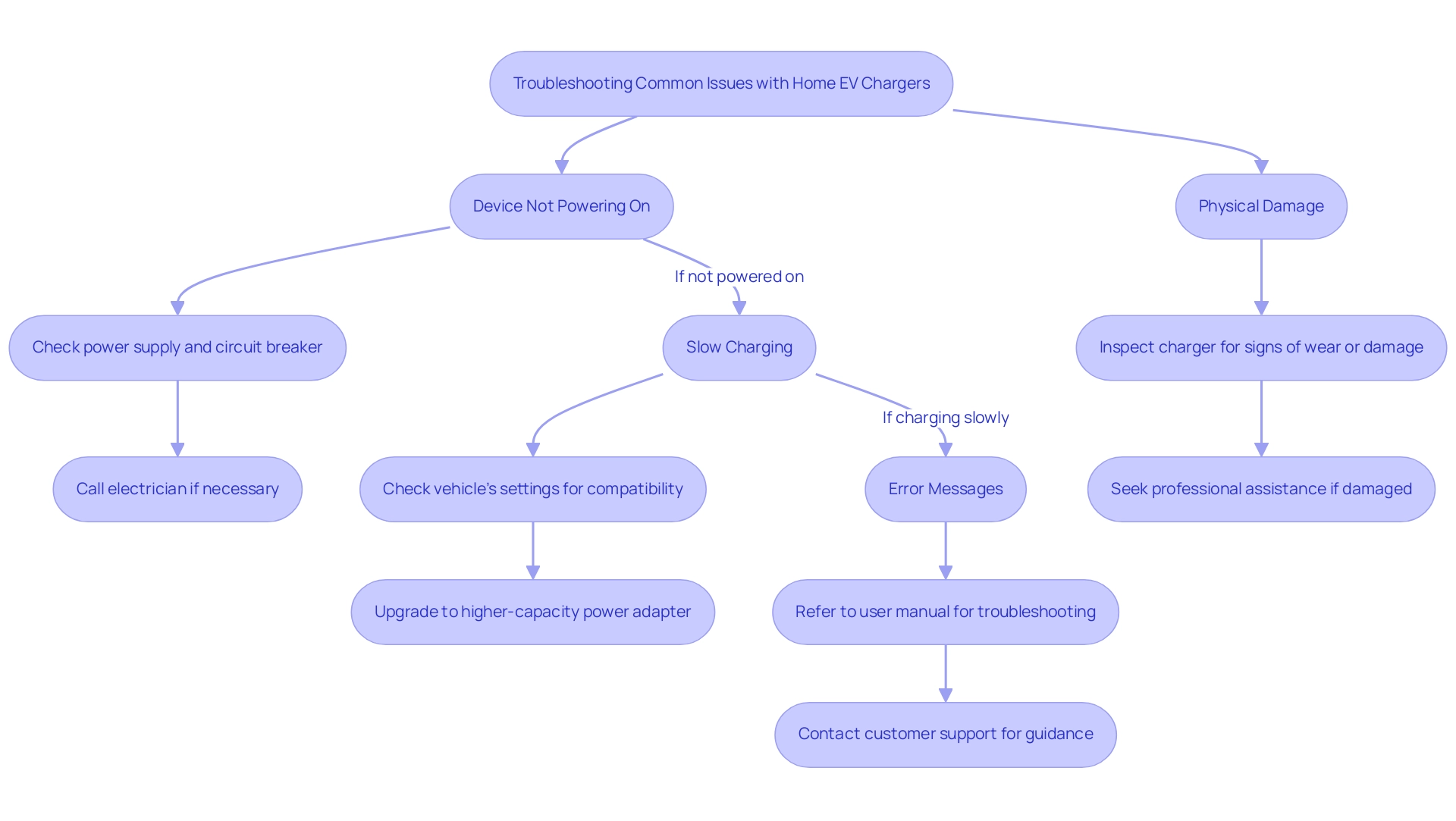Overview
To install a home car electric charger, you should first assess your home’s electrical capacity and hire a qualified electrician to ensure compliance with local regulations. The article outlines a step-by-step installation process, emphasizing the importance of selecting the right charger type and considering potential financial incentives, which collectively facilitate a safe and efficient setup for electric vehicle charging.
Introduction
As electric vehicles (EVs) continue to gain popularity, many homeowners are considering the transition to home charging solutions. Preparing a home for an EV charger involves more than just plugging in; it requires thoughtful planning and understanding of electrical systems.
From assessing your home’s electrical capacity to selecting the right charger type, every step is crucial for a successful installation. This guide delves into the essentials of preparing your home for an EV charger, detailing the following:
- Installation process
- Types of chargers available
- Cost considerations
- Troubleshooting common issues
By equipping yourself with the right knowledge, you can not only enhance your driving experience but also embrace a more sustainable lifestyle.
Preparing Your Home for an Electric Vehicle Charger
Before diving into the installation of your home car electric charger, it’s essential to evaluate your home’s electrical capacity. Start by inspecting your main electrical panel to determine whether it can support the additional load from your new device. If you’re uncertain or if the panel appears complex, feel free to reach out to Powercore Electric Inc. Our qualified electricians can conduct a thorough assessment of your system, recommend any necessary upgrades, and ensure compliance with local regulations to keep everything running smoothly and safely.
Once you’ve confirmed that your electrical panel is suitable, selecting the ideal location for your charging device is crucial. Ideally, this should be near where you park your electric vehicle, taking into account accessibility and visibility. A strategically positioned charger not only streamlines your routine but also promotes consistent power replenishment habits.
It’s also prudent to educate yourself about local regulations or homeowners’ association guidelines concerning EV charger setups. This proactive step can help you avoid compliance issues down the line. Keeping updated on the latest information regarding electrical capacity needs will guarantee a smooth and stress-free setup process.
Additionally, investing in a home car electric charger can lead to substantial savings in the long run, especially with rising fuel costs. As you prepare for your installation, consider the long-term benefits of having a home car electric charger, including reduced electricity costs compared to public charging stations. With the expected increase in lithium-ion battery manufacturing capacity, anticipated to reach an impressive 3.2 TWh by 2030, the future of electric vehicles is bright, and you’re on track to be part of it!
Furthermore, the number of publicly accessible charging stations in Europe increased by 30% in 2021, with the Netherlands leading in slow options, highlighting the growing demand for electric vehicle charging points and their relevance in today’s market. As David Hochschild, Chair of the California Energy Commission, emphasizes, ‘The transition to electric vehicles is not just a trend; it’s a necessary shift towards sustainable living and energy efficiency.’ This insight emphasizes the significance of readying your home car electric charger for an electric vehicle installation, making services like those provided by Powercore Electric essential for your eco-conscious journey.
Step-by-Step Installation Process for Your EV Charger
-
Hire a Qualified Electrician: Your journey to a convenient home car electric charger setup begins with hiring a licensed electrician who has experience in EV charger installations. Engaging an expert ensures that your installation complies with local codes and safety standards, providing peace of mind as you transition to electric driving. According to Angi, which has assisted over 150 million homeowners in transforming their houses into living spaces, consulting with an electrician can help you understand the necessary equipment and any local regulations that may apply.
-
Select the Right Solar Battery: Alongside your EV power system, consider the benefits of incorporating solar technology into your home. Selecting the right solar battery is crucial for maximizing your energy efficiency and sustainability. Factors such as capacity (measured in kilowatt-hours), lifespan (typically 5-15 years), efficiency (how much energy is converted and stored), and cost should guide your decisions. Common types of solar batteries include lithium-ion, lead-acid, and flow batteries, each with distinct characteristics and suitability for different needs. A well-chosen solar battery can enhance your EV charging experience by utilizing renewable energy, reducing your reliance on the grid, and potentially saving you money.
-
Install the Home Car Electric Charger: The electrician will expertly mount the home car electric charger on your wall, often in a garage or on an exterior wall for easy access. They will connect it to your residence’s electrical panel, ensuring that the wiring is done correctly and the grounding is secure. If your residence needs electrical upgrades—such as adding a subpanel—the total expense can rise considerably, possibly adding between $650 and $2,000 to your bill. This underscores the importance of consulting with a qualified electrician.
-
Test the Device: Once the installation is complete, your electrician will thoroughly test the device to confirm it functions correctly. This process involves checking the power supply and ensuring the device can communicate seamlessly with your vehicle. As René Bennett, a staff writer, aptly states,
You can plug your electric car into a regular 120-volt household outlet only if you’re using a Level 1 device,
so proper testing is crucial.
-
Finalize Setup: After the device passes all tests, it’s time to finalize your setup. You can configure any app or connectivity features related to your charger, allowing you to monitor power status, schedule power times, and even take advantage of any available rebates or tax credits that can help reduce your installation costs—some utility companies offer rebates up to $1,000. Emphasizing these financial benefits will ensure you’re fully prepared to enjoy the advantages of your new EV power station. For further assistance and to explore Powercore Electric‘s EV solutions, contact us today and embrace a cleaner, more sustainable future!
Understanding Different Types of EV Chargers
When it comes to powering your electric vehicle (EV) at residence, understanding the three main varieties of devices can make all the difference:
- Level 1 Devices: These units connect to a standard 120-volt outlet, making them the most accessible option for overnight power. However, they are the slowest, typically delivering only 2 to 5 miles of range per hour when using a home car electric charger. They’re excellent for individuals who travel short distances each day and have the time to recharge overnight.
- Level 2 Units: Operating at 240 volts, Level 2 units are a common option for a home car electric charger setup, representing 42.9% of all power locations according to ChargePoint. They provide a much quicker charge, adding between 10 to 60 miles of range per hour. This kind of device does require professional installation, and at Powercore Electric Inc., we provide extensive services including consultation, installation, and maintenance to ensure your station is set up correctly. The investment benefits numerous EV owners seeking a dependable and efficient power solution.
- DC Fast Units: Primarily located in commercial environments, these devices can energize your vehicle to 80% in approximately 30 minutes. While they provide incredible speed, their high costs and power requirements render them impractical for home setups.
As of February 27, 2024, there are over 61,000 publicly accessible electric vehicle charging points with Level 2 or DC Fast options in the U.S., emphasizing the increasing availability of charging alternatives. By understanding these options, you can select the device that aligns best with your driving habits. Whether you choose the convenience of a Level 2 unit or the simplicity of a Level 1, understanding the advantages and disadvantages of each type improves your EV ownership experience.
Moreover, with the global lithium-ion automotive battery production capacity anticipated to hit 3.2 TWh by 2030, the increase in EVs will require enhanced power supply systems, making the selection of charger type even more important for homeowners. Additionally, integrating solar panels and battery backups into your charging setup can further enhance your energy efficiency and sustainability. For more information or to discuss setup choices, feel free to contact Powercore Electric Inc. at ryan.serrano@powercoreinc.net or call (916) 699-8778.
Cost Considerations and Financial Incentives for EV Charger Installation
When contemplating the setup of a home car electric charger at home, you can expect to spend between $800 and $2,000. However, depending on factors such as the kind of power source and particular setup requirements, expenses can escalate to $20,000. For instance, one customer noted, ‘Powercore Electric made the installation process seamless and efficient, and I was thrilled with the final price.’
It’s crucial to evaluate plug compatibility and decide whether you want your power supply hardwired or simply plugged in, based on the required amperage. But don’t worry—there’s good news! Many states and utility companies are stepping up to help with rebates and tax credits that can significantly reduce your expenses, with some utility companies offering rebates as high as $1,000.
It’s definitely worth checking with your local programs and utility providers to discover available incentives in your area. Additionally, when budgeting for your EV station, keep in mind the long-term savings on fuel and maintenance compared to traditional vehicles. Also, be aware of potential permits and inspection fees, which can range from $50 to $300 in places like Oregon and Washington.
By investing in a home car electric charger, you’re not only embracing a sustainable lifestyle but also paving the way for substantial future savings. Plus, with Powercore Electric’s local expertise, unmatched quality craftsmanship, and customer-first service, you can feel confident that your installation will meet the highest standards, tailored to the unique needs of California communities. Another satisfied customer shared, ‘The team at Powercore Electric was incredibly knowledgeable and provided excellent support throughout the entire process.
Troubleshooting Common Issues with Home EV Chargers
-
Device Not Powering On: First things first, double-check that your power supply is properly plugged in and that the circuit breaker hasn’t tripped. If everything seems in order but it still won’t power on, it’s a good idea to call in your electrician for a professional check-up. As the EV infrastructure grows, such as France’s plan to implement almost 5,000 km of Electric Road systems by 2030, ensuring your home charging station operates effectively is crucial for a smooth transition to electric mobility. Don’t forget that Powercore Electric is here to assist with any electrical upgrades you might need for your setup, including the installation of your EV charging station.
-
Slow Charging: If your power supply seems to be taking its sweet time, it might be worth checking your vehicle’s settings to confirm compatibility with your device. Sometimes, upgrading to a higher-capacity power adapter can make all the difference, providing you with the charge speed you expected. This is especially important as studies indicate that closeness to power stations greatly affects public trust in the EV infrastructure; 20% of those residing within a mile of a station feel assured about infrastructure advancement. Powercore Electric also offers guidance on optimizing your home energy system, including solar battery choices for efficient energy storage and the installation process for your EV charging station.
-
Error Messages: Many modern power adapters come equipped with diagnostic features that display helpful error messages. When you see one, don’t panic! Refer to the user manual for troubleshooting steps or reach out to customer support for guidance. Remember, as Elizabeth Bruce from Microsoft Innovation and Society states, “This project is a great example of how increasing access to emerging AI technologies enables researchers to better understand how we can build a more sustainable and equitable society,” emphasizing the importance of reliable technology in our transition to EVs.
-
Physical Damage: Make it a habit to regularly inspect your charger for signs of wear or damage. If something looks off, it’s best to stop using it immediately and seek professional assistance to avoid any potential hazards. By staying informed about these common issues and their solutions, you can ensure a smooth and efficient charging experience for your electric vehicle. Remember, you’re not alone on this journey; many homeowners are navigating these same challenges. Together with Powercore Electric, we can make the shift to electric more seamless and reliable. Additionally, understanding solar panel functionality and optimal battery choices will further enhance your home energy setup.
Conclusion
Preparing your home for an electric vehicle charger is an important step toward embracing a more sustainable lifestyle. By assessing your electrical capacity, selecting the right type of charger, and understanding the installation process, homeowners can ensure a smooth transition to home charging. Knowledge of the different charger types—from Level 1 to Level 2—helps in making an informed choice that best suits individual driving habits and needs.
Cost considerations play a significant role in the decision-making process. While installation costs can vary, it is encouraging to note that many states and utility companies offer rebates that can ease the financial burden. These incentives, coupled with long-term savings on fuel and maintenance, make investing in an EV charger not only an eco-friendly choice but also a financially savvy one.
Lastly, being aware of common troubleshooting issues can help maintain a hassle-free charging experience. Regular checks and understanding potential problems ensure that homeowners can enjoy the convenience of home charging without unnecessary setbacks. With the right preparation and support, making the shift to electric driving can be a rewarding and empowering journey. Embracing this change not only benefits individual households but also contributes to a broader movement toward sustainable living and energy efficiency.
